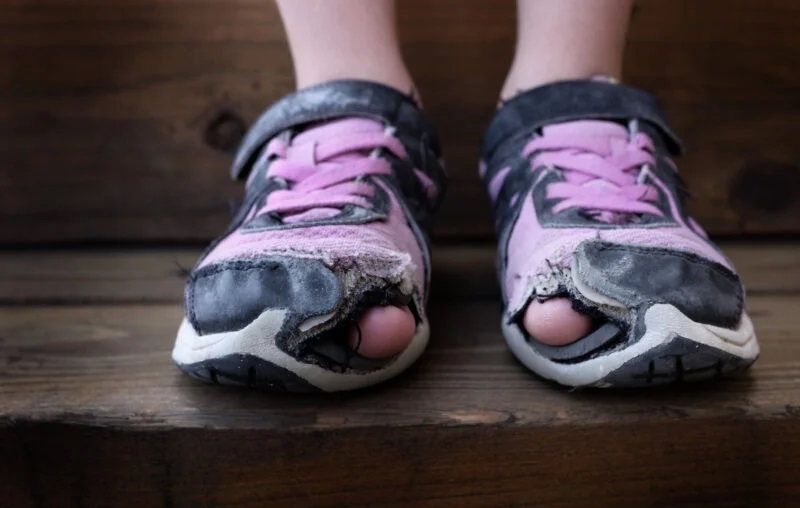One way to reduce inequality is by reducing taxes on low-income families and replace them with the far more progressive income tax.
The income tax is highly progressive. It takes a higher portion of the income of the rich than the poor. But federal, state and local governments raise revenues in a number of ways that are regressive, taking a greater portion of the incomes of the poor than the rich. In some cases, the total dollar amounts paid by the poor are higher than the amounts paid by the rich.
One popular way of raising state revenue is through a state-run lottery (coupled with a prohibition on competing private lotteries). This way of raising funds is highly regressive:
- The dollar amount spent on the lottery by the lowest-income individuals (earning less than $10,000 annually) is twice as much as the highest earners (earning more than $100,000 annually).
- But lotteries have worse odds than other forms of gambling; in fact, states retain some 33 cents of each dollar of lottery revenue — whereas privately owned casinos keep just 4.4 percent ofthe take.
Another popular revenue source is taxes on tobacco. Yet:
- One-third of lower-income adults smoke versus one-fifth of middle- and high-income earners, according to the Centers for Disease Control and Prevention.
- High school graduates who smoke spend some $1,453 on tobacco products each year, versus just $1,248 for smokers with professional degrees.
- High school dropouts who smoke spend three to four times as much of their income on tobacco products as professionals who smoke (4.47 percent and 1.27 percent, respectively).
In addition to direct taxation, state governments have imposed indirect costs on tobacco users through litigation. The Master Settlement Agreement between the major tobacco companies and 46 states requires the tobacco companies to pay the states $200 billion over 25 years to compensate for state health care costs attributed to smoking. More than 90 percent of the settlement costs are passed on to consumers. In fact, the settlement raised the price of cigarettes about 45 cents per pack.
Taxes on beer, wine and liquor also burden the poor disproportionately. Consider:
- The portion of income spent on alcoholic beverages by the lowest fifth of earners is double that of middle earners and more than three times that of the highest earners, on the average.
- Lower-income earners who actually purchase alcohol spend an average of $1,158 a year —more than the $1,092 spent by
- middle earners — and 10 times the portion of their total income as the highest earners
Some advocates claim taxes on harmful behaviors — like smoking and excessive drinking — are justified to recoup the costs those activities impose on others, such as secondhand smoke and drunk driving. Although the evidence is mixed, it appears that taxes on tobacco already more than compensate for the social costs of smoking. Even though alcohol consumers as a group do not pay for all the costs imposed on society by alcoholism, there is no reason to punish moderate drinkers for the behavior of alcoholics.
Advocates also claim these taxes encourage people to change their behaviors in socially desirable ways, because the taxes are almost entirely passed on to consumers. However, when prices for tobacco and alcohol products rise due to tax increases, demand for these products does not go down much. A few consumers will quit and many will substitute lower-cost brands, but most lower-income smokers and drinkers will continue to use tobacco and alcohol. Thus, raising taxes on these products makes the tax burden even more regressive.
Furthermore, the evidence indicates that these taxes are designed to raise revenue, rather than discourage unhealthy behavior. For example, if the true purpose of taxes on tobacco products is to recoup the external costs to society, states should levy lower taxes on smokeless products. While smokeless tobacco is not safe, studies suggest it is safer than smoking cigarettes. Yet, about a fifth of the states charge higher taxes on smokeless tobacco than cigarettes:
- Per $1 of wholesale price, taxes in Massachusetts are 90 cents for smokeless products versus 68 cents for cigarettes; in Minnesota, 70 cents versus 55.4 cents; and in Oklahoma, 60 cents versus 46.4 cents.
- In Texas, smokeless tobacco taxes are nearly twice as high as cigarette taxes, 35 cents versus 18 cents.
Poorer taxpayers are also disproportionately burdened by excise taxes imposed on “necessities,” such as gasoline, utilities and telephone services. Since lower-income households spend more of their incomes on these items, they pay a greater share of these taxes. For instance:
- People making $24,000 a year spend more than twice as much of their income on gasoline as those earning five times as much.
- People making less than $10,000 a year spend nearly one-fifth of their incomes (18.8 percent) on necessities subject to excise taxes, including utilities and public services, and they pay almost six times as much of their incomes on these taxes as the highest earners.
The lowest fifth of income earners spend nearly one-third of their income on alcohol, tobacco, utilities and gasoline, on the average. By contrast, the highest earners spend just 6 percent of their income
on these items. Thus, taxes on these products are especially burdensome to the poor.
[Note: this is a 2007 study and the numbers should be updated]

0 Comments